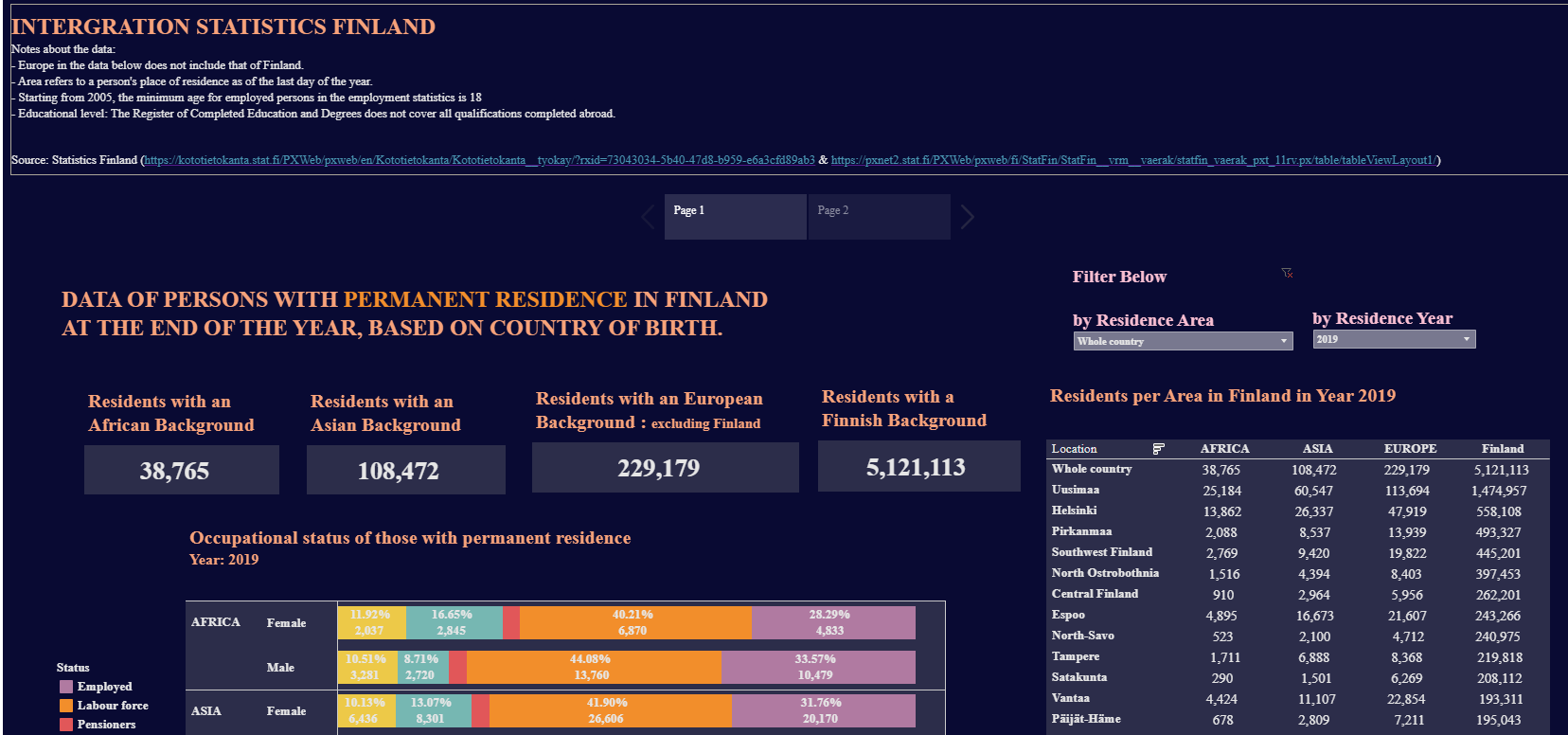
In this day and age of data, making decisions based on data is important. As a data analyst, I understand the vast benefits data and the use of it for decision making has for organisations.
However in order to make decisions based on data, you need the data first and sometimes this is not so easy to acquire or it’s not available, especially when it comes to data pertaining to persons living in Finland that are of African descent i.e., African diaspora. This has often posed a challenge for us at Think Africa as we need such data whenever we are designing programs or activities. Data to for instance help us understand the scale of employment or unemployment or where the majority of the diaspora reside in Uusimaa and around Finland.
I was thus glad when I saw that Statistics Finland has made available economic and integration data at the level of the country of birth (source). The Statistics are available until 2019. Using my data analytic abilities, I downloaded the data in addition to the Population data, cleaned it up and created this visualization as a Tableau Story for anyone to access the data in a visual format -> Here
The visualization includes data of persons whose background is Africa, Asia, Finland and the rest of Europe. The Tableau Story consists of two pages. The first shows the economic data that is available. This is available for persons who have permanent residence in Finland up to the year 2019 or 2018. The second page shows data pertaining to those who reside in Finland regardless of whether they have permanent residence or not, up to the year 2020.
Based on the data and from the Think Africa perspective, I summarize here a few initial observations, with more in depth analysis to be conducted over time. Many of them are sort of already known, but it’s also good to have the numbers.
– In 2019, 71.2% (38 765 out of 54 450) of those with an African background had permanent residents.
– The largest diaspora group is of Somali background, the second is from Nigeria.
– Majority of the African diaspora live in Helsinki, then in particular. Knowing this also helps us identify the cities we can expand to.
– In which occupation groups and levels are Africans employed in? At the top level 1, we see that most African diaspora are employed in Elementary occupations and service and sales work and very few are at managerial levels when you compare the percentages among those with Asian or European background. When looking at the level 2, we see in particular that the diaspora is employed . When you look at which group particularly under there, the majority are in cleaners and helpers, personal care workers, drivers and mobile plant operators groups.
– The largest unemployment levels are seen among the African diaspora group, in particular, among the females.
– Similarly to all residents regardless of background, of those that are employed, majority receive a salary or wage as opposed to self employment. Noticeably, females of African background do not seem to pursue entrepreneurship when compared to females of Asian, European or Finnish background.
That’s it for now. Is there something more you wish me to add to this visualization? Any insights you gain from it? Or recommendations of further analysis to conduct? Drop me an email at myriam@thinkafrica.fi
Written by:
Myriam Munezero -> myriammunezero.com



One thought on “How are persons of African descent fairing compared to Asians or other Europeans living permanently in Finland: Integration Statistics Data Visualized”